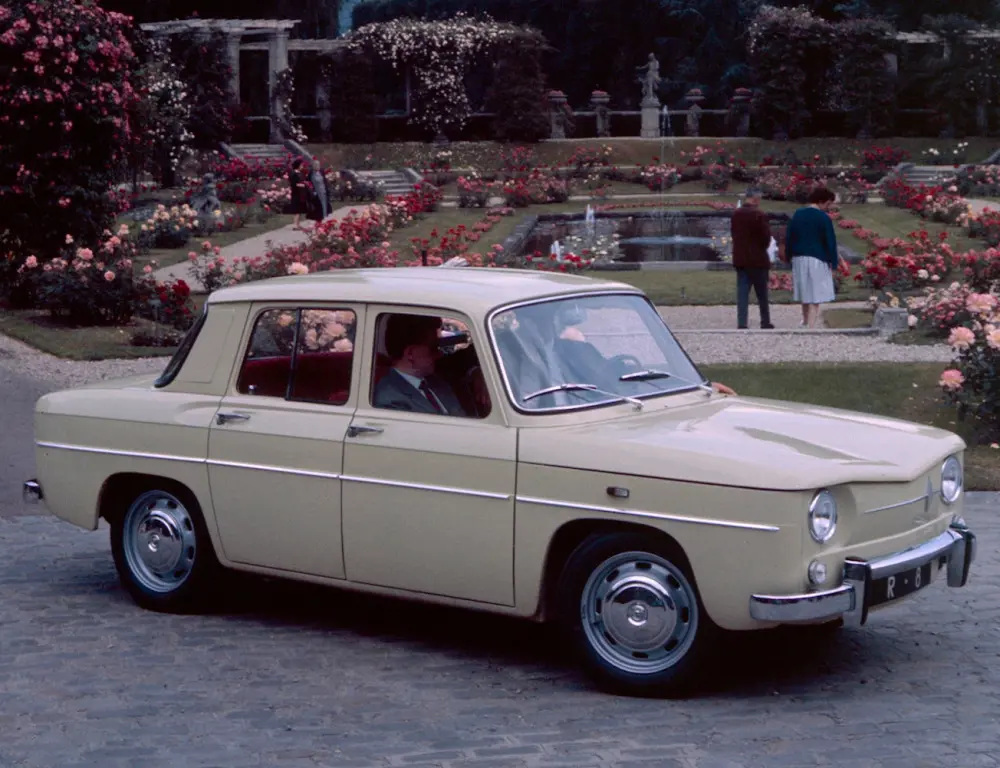THE RENAULT R8 AT 60
06 July 2022
2022 marks the 60th birthday of many significant vehicles - including the Renault R8. When it made its bow in June 1962, it represented the third generation of the marque’s rear-engine saloons, following the Dauphine and the 4CV, and a swansong of the format. The company dispensed with the front engine/RWD layout when production of the Frégate ended in 1960, and in the following year, the FWD R4 embodied the company’s future. However, Fiat, NSU and Simca’s success demonstrated a strong demand for rear-engine models.

The R8 was essentially the Dauphine formula writ large, with bodywork eight inches greater in length, a new five-bearing 956cc ‘Sierra’ engine with an alloy head, all-independent suspension and very unusually for a 1962-vintage small saloon, Lockheed disc brakes front and rear. The designer Philippe Charbonneaux created the distinctively angular bodywork, which was certainly a contrast to any previous small Renault. At £764 2s 9d, it was a relatively expensive proposition; the Ford Anglia Super cost £598 13s 9d, and the new Morris 1100 De Luxe £695 7s 9d, but the standard equipment included a heater, fresh air vents, windscreen washers and a steering column lock. Autocar thought the R8 “a considerable advance on the Dauphine” and concluded it was “a thoroughly mature and well-planned little car with good manners and a friendly character”. Motor Sport was even more effusive, regarding it as “the best Renault of all; a splendid little car I would always enjoy taking on a journey”.
Renault dispensed with the ‘R’ suffix in 1964 when they introduced the ‘Major, with a 4-speed gearbox and a 1,108cc engine. By that time, the 8 was a part of everyday life in its homeland: family transport or black and white police ‘Pie’ patrol car. Film and television production companies also favoured the 8, as they could carry a camera operator in the front luggage compartment. Outside France, versions were made in Algeria, Australia, Bulgaria, Canada, Mexico, New Zealand, Spain and Venezuela, while in Romania, the 8 became the first Dacia product. In 1965 Nicolae Ceausescu initiated a production scheme for a small car, and Renault originally agreed to build the 12 under licence. However, as it would not debut before 1969, assembly of the 8 – aka the “Dacia 1100” – commenced in August 1968 as a stop-gap.
The longer-nosed 10 succeeded the Major in 1965, with the French production of the standard model ending in 1971; FASA of Spain continued to sell the 8 until 1976. You would be very hard-pressed to find a surviving example in the UK – only 30 are believed to remain on the road, making it a vehicle of rare distinction.
